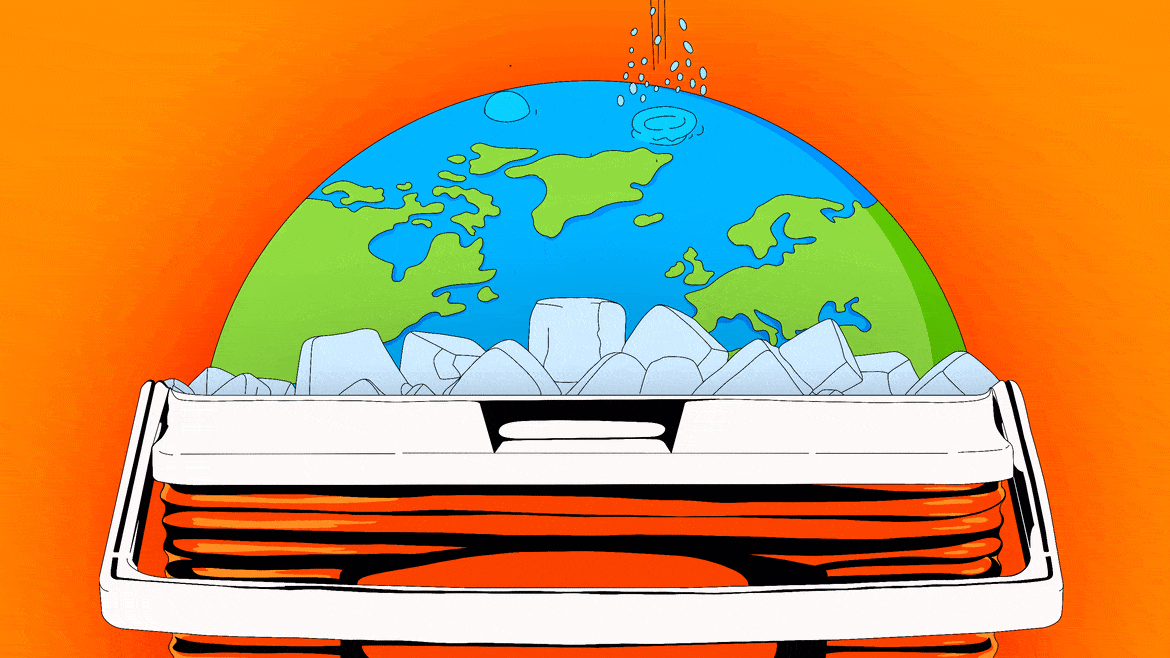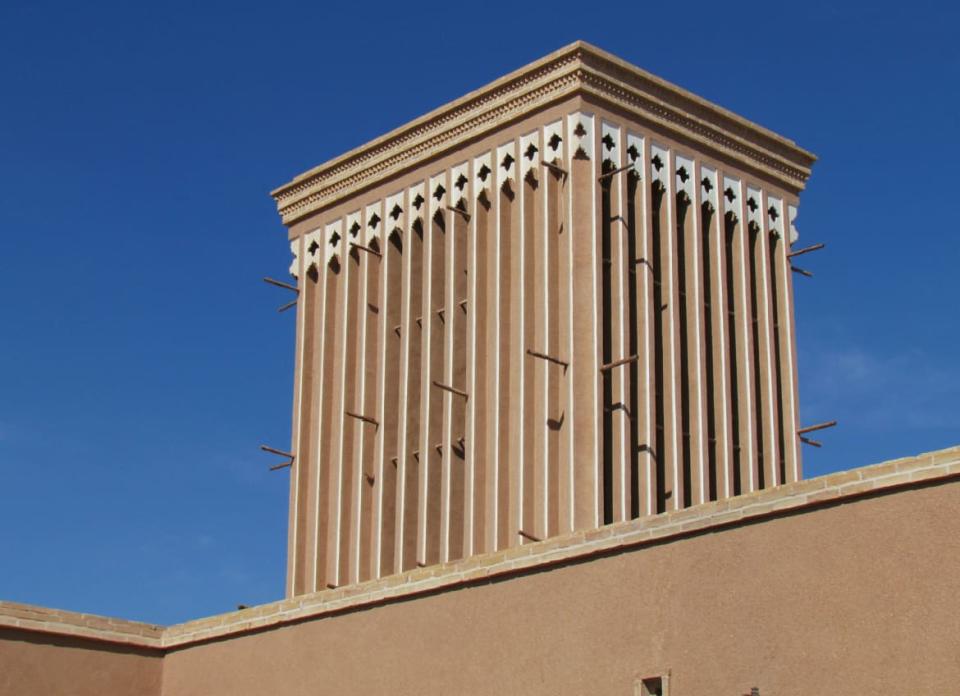Air Conditioning Is Killing the Planet—Here’s How to Fix It

Though climate scientists say humans can still avoid the worst possible effects of climate change if the economy adopts carbon-neutral activities as soon as possible, it’s clear the planet will continue to warm regardless of how quickly we achieve that goal. To a certain extent, humans will have to face a hotter, more dangerous planet. That means we’re going to need to figure out sustainable ways to keep things comfortable at home, at work and everywhere in between as temperatures rise.
The obvious solution to dealing with high temperatures is air conditioning, but current AC technology is just making climate change worse. Most designs require the use of refrigerants: chemicals that absorb heat and turn it into cool air after it runs through a compressor and evaporator. The most common AC refrigerants are hydrofluorocarbons (HFCs), but they are potent greenhouse gases—thousands of times more effective at trapping heat than carbon dioxide.
So we’re in a bind at the moment: the higher temperatures rise, the more our AC units are on full blast. The more our AC units are running, the more they’re contributing to climate change and, of course, rising temperatures.
How Climate Change Could Help Modernize Rural America
The EPA ruled earlier this year that the U.S. will reduce the production and consumption of HFCs by 85 percent over the next 15 years. It’s the right move, but with demand for air conditioning continuing to increase globally, we’re under a time crunch for AC ideas that still move us away from HFCs.
“What people are looking at is essentially different molecules that are easy to break down and don’t have quite the greenhouse effect that HFCs have,” Mircea Dincă, a professor of energy at MIT, told The Daily Beast.
One possible replacement, hydrofluoroolefins (HFOs), are already used for air conditioning in many vehicles and stay in the atmosphere for far less time than HFCs. But the initial cost for HFOs is high, and companies just haven’t been bothered enough to make the shift anyway.
Other possible alternatives include ammonia, propane and carbon dioxide. But these solutions are attached with high risks—with propane, a leak could cause a fire. An ammonia leak itself could also be fatal to people.
A San-Francisco-based start-up named Gradient has designed an air conditioner that uses a refrigerant called R-32, which is part of the HFC family but is a greenhouse gas that is less than half as damaging to the atmosphere compared to the HFCs we traditionally use for air conditioning. Researchers in Germany designed a device that uses metal alloys to literally suck heat out of the air, which means no refrigerants are needed at all. It’s too early to tell, however, whether either of these solutions could lead to a dominant new form of AC.
Outside of the HFC problem, we also need to make the machines that cool our homes and workplaces more energy efficient to help combat climate change. According to Dincă, the reason air conditioning units are so inefficient is because they have to not only cool the air but the water vapor in the air.
“What you should be cooling is just essentially the nitrogen and the oxygen in the air—not the water. Water has a very high heat capacity, so it takes a lot of energy to cool the water,” said Dincă. “It actually cools the air much below the temperature you need to feel comfortable, so that’s a huge energy waste.”
Dincă said one way to solve the problem is to simply remove the water vapor, which is why he co-founded a company called Transaera that has designed highly porous materials that can pull moisture out of the air while an air conditioner is operating. Regardless of what refrigerant your air conditioning unit is using, these kinds of materials could help make it far more efficient, which is good for the environment.
There are also low-tech ways we could help keep our buildings cooler that get around the AC predicament. The U.S. is hampered by the fact that buildings often have very little ventilation that would encourage more natural cooling for homes and workplaces. Clark Bullard, a retired engineering professor and former director of the Conservation and Renewable Energy Policy Office at the Department of Energy, told The Daily Beast that Americans should rethink building design in more radical ways.
“A long time ago in the United States,” said Bullard, “because electricity was cheap and air conditioning came in, engineers started designing buildings with windows that didn’t open, or with eight-foot ceilings instead of 10- or 12-foot ceilings where all of the hot air didn’t have anywhere to go.” These staid design habits have stuck with us for decades, even long after the threat of climate change has come into sharper focus.
We can’t redesign every building in the country to make ventilation better, said Bullard, but we could rethink how we design buildings in the future and retrofit buildings where we can. He says if you’re in an area where there’s not much humidity, ventilation can go a long way toward keeping things cool. One concept that could help are electrochromic windows—smart windows that can let heat in at certain times of the day and let heat out at other times, optimizing cooling based on changing conditions.

A historical Badgir located in Iran.
In the Middle East, where heat is obviously a major issue, simple but elegant engineering can do the trick. Wind catchers (called badgirs) are tall structures that sit on top of homes and direct breeze into your home. These kinds of techniques could be used to help cool American homes without using any electricity at all.
Staying indoors indefinitely just to keep cool is out of the question, so we also need to think about how we’ll keep our outdoor spaces comfortable as the planet warms. There are also tried-and-true ways to achieve that goal.
“Trees are great air conditioners,” said Bullard. “They suck up water out of the ground and evaporate it so it might be 5 degrees or even 10 degrees cooler around a forest than it is walking out in a field. It not only shades you, but they also have a lot of evaporative cooling. They cool the air because every leaf is a heat exchanger that’s evaporating water in the air.”
Narasimha Rao, an associate professor of energy systems at Yale, is bullish about the power of natural environments to cool things down. “We need to have more urban greening, because cities are where most of the population will live in the next 30 years, and there’s a heat island effect,” he told The Daily Beast. “We also need to worry about the built form of cities to make them cooler.”
Not all of these solutions have to be massive overhauls in urban infrastructures. One simple way of combating the heat island effect (the swell of heat that collects in cities) simply involves painting things a lighter color. Dark colors absorb heat from the sun, so you can reduce how much solar energy a city absorbs by painting more things white or other lighter colors. This paint can be applied to roads, roofs and more to reflect sunlight. Researchers created a white paint earlier this year that reflects 98.1 percent of sunlight, which allowed it to reduce surface temperatures to 8 degrees below air temperature during the day. More and more cities are turning to lighter paints as a cheap way to blunt rising temperatures.
There are other lessons from the Middle East that could inspire the West to redesign cities to deal with rising temperatures. For example, instead of having pedestrians walk down streets alongside cars—where the sun heats the asphalt up to blistering temperatures—we could design narrow pedestrian alleyways that provide shade and funnel in the breeze. Scientists have learned that small bodies of water, even fountains, can also help cool down an area. The Moorish palace of the Alhambra in Granada, Spain, has kept things cool through this method since the 1300s.
None of these solutions are silver bullets. And to a certain extent, people will need to accept that we’ll be living in a hotter world no matter what we do. How hot things will get and what places will remain livable will depend on what aggressive actions countries take to combat climate change going forward.
Got a tip? Send it to The Daily Beast here
Get our top stories in your inbox every day. Sign up now!
Daily Beast Membership: Beast Inside goes deeper on the stories that matter to you. Learn more.

